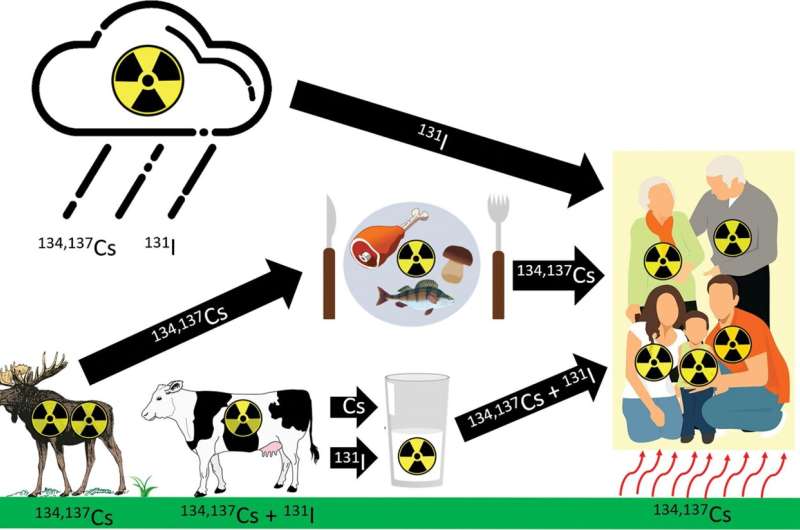This article has been reviewed according to Science X's editorial process and policies. Editors have highlighted the following attributes while ensuring the content's credibility:
fact-checked
trusted source
proofread
Some increase in cancer found after 1986 Chernobyl disaster

The nuclear accident in Chernobyl in 1986 led to the spread of radioactivity across Sweden and Europe. In a long-term study now published in Environmental Epidemiology, researchers have used new, more specific calculation methods to show the connection between radiation dose and certain types of cancer.
The current study is a longitudinal follow-up covering all the inhabitants—2.2 million—who were living in nine counties in 1986 (Norrbotten, Dalarna, Södermanland, Jämtland, Västmanland, Gävleborg, Västerbotten, Uppsala and Västernorrland). These counties contain people with varying doses of radiation from the Chernobyl fallout, caused by ingestion of contaminated food and from the surface of the soil, and who were monitored by the National Cancer Register up until 31 December 2020.
Previous follow-ups carried out in Sweden, the most recent in 2010, have shown a certain overall increase in all cancers linked to the soil.
"The big difference compared to those studies is that we have now developed and deployed a dose calculation program to be able to calculate the radiation doses in the various organs of the body from soil and food," explains Martin Tondel, Researcher in Occupational and Environmental Medicine at the Department of Medical Sciences, Uppsala University and Uppsala University Hospital.
In the study, the researchers compared the calculated radiation doses from soil and different foods in various bodily organs to the incidence of different forms of cancer. They also adjusted for potentially influential factors such as underlying cancer incidence in the counties before the Chernobyl accident, living in urban/sparsely populated areas, education level, age and gender.
The results show a slightly increased incidence of cancer in the colon, pancreas and stomach in men and a certain increase in lymphoma in women. However, the increased risks are small and cannot be translated to an individual risk, the researchers say, and they emphasize that it is important to interpret epidemiological results with caution.
"Proven connections do not mean that we can safely say that radiation is also the cause. But studies following nuclear accidents are very important in terms of gaining more knowledge about radiation and cancer and for developing research methods. For example, we have identified that a hunting lifestyle may have played a role in our results, which means that we will be able to draw even more reliable conclusions in future studies."
More information: Martin Tondel et al, Dose–response analysis of protracted absorbed organ dose and site-specific cancer incidence in Sweden after the Chernobyl nuclear power plant accident, Environmental Epidemiology (2023). DOI: 10.1097/EE9.0000000000000277



















